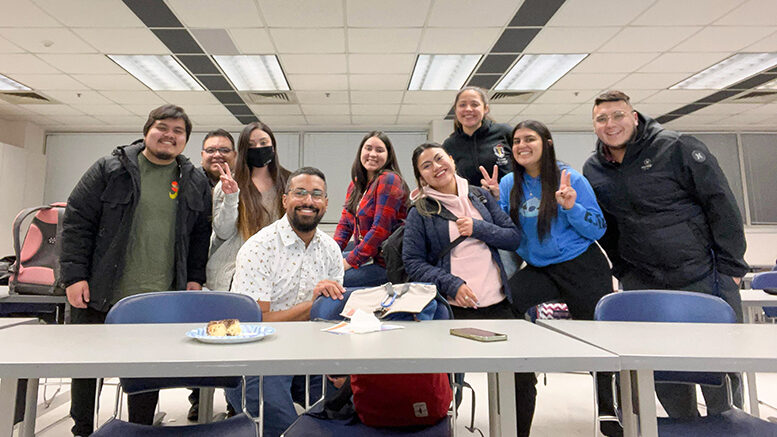The scientific method, cell structure, cellular respiration, photosynthesis, mitosis and meiosis, DNA structure. These are some of the complex topics taught in professor Emmanuel Santa-Martinez’s biology classes; topics that are even tougher to grasp if you are an English learner.
“I saw that Latinx students in the intro to biology courses were struggling to succeed, so I wondered what the result would be if we removed the language barrier,” said Santa-Martinez, who launched Salt Lake Community College‘s (SLCC) first dual-language biology class in fall 2021.
This article comes from the winter/spring issue of SLCC Magazine, published by Salt Lake Community College. It is reprinted with permission.
More than 87% of the Latinx students passed with an A-, while in the previous all-English biology class, the Latinx students earned C grades. However, it wasn’t just the improved grades that Santa-Martinez noted.
“In the classroom, there was a tremendous change in how students engage — students were more comfortable and conversational and asked more questions,” he said.
Extra help
Santa-Martinez explained the dual-language approach is about providing accessibility and equality, so all students have the resources they need to succeed. In his biology courses, he provides resources in both Spanish and English; this includes all assignments, research materials, quizzes and exams.
Santa-Martinez emphasized that his Latinx students want to learn the concepts in English, but if they are tired or confused, they can refer to Spanish.
“These students do not want an all-Spanish speaking class because they know they need to know English well for their future careers,” he said.
He also emphasized that his biology classes are not designed to be Spanish classes for those who want to learn Spanish.
“The goal of this course is to primarily support native Spanish speakers to learn biology successfully,” he said.
A needed boost
Student Annery Hansen said a dual-language class helped her understand certain ideas and terms that she would otherwise have a hard time understanding.
“It is especially hard to understand scientific terms in a different language, so this program of having dual-language classes has been such a benefit,” Hansen said. “I believe [this class] has given me a lot of success in my schoolwork and eventually into my future career.”
Hansen’s sentiments were echoed in feedback provided by other students, such as Vanessa Alvarez, who added, “I finished this course with a lot of knowledge acquired. Having a bilingual class was one of the best experiences I have had in college.”
As an emerging Hispanic-serving institution, in which almost a quarter of SLCC’s student body identifies as Latinx, offering a dual-language biology class is another step in supporting this population.
Hansen’s sentiments were echoed in feedback provided by other students, such as Vanessa Alvarez, who added: “I finished this course with a lot of knowledge acquired. Having a bilingual class was one of the best experiences I have had in college.”
As an emerging Hispanic-Serving Institution, in which almost a quarter of SLCC’s student body identifies as Latinx, offering a dual-language biology class is another step in supporting this population.

